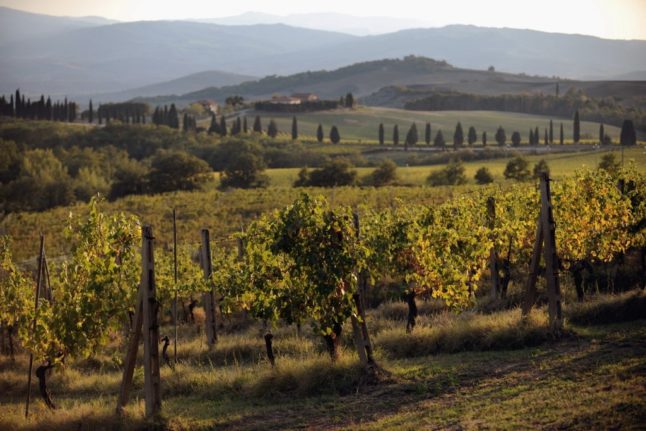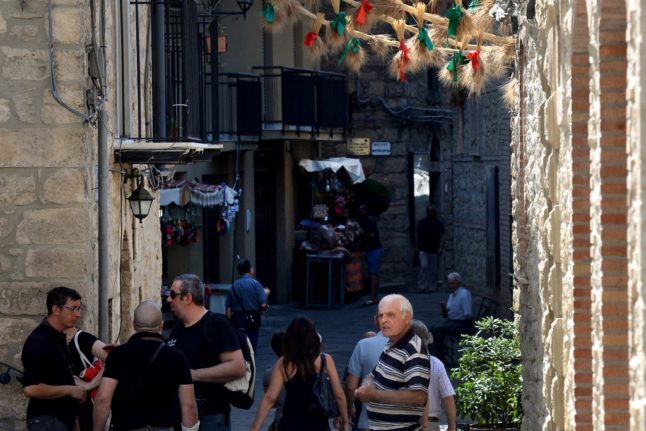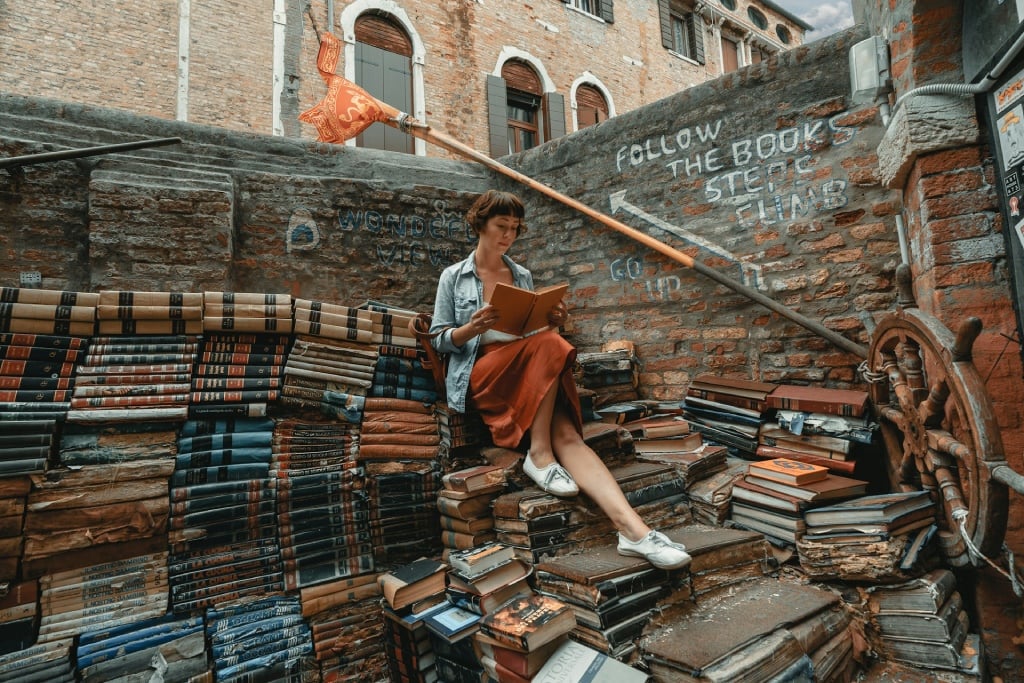As towns across Italy are putting up for sale old houses, often triggering property stampedes, those rushing to buy them are mainly foreigners.
Lured by the Italian idyll of great food, peacefulness, and the sense of authenticity that only rural spots still preserve, people in search of a second home don’t often realize immediately that what they want is exactly what other foreigners crave as well.
READ ALSO: Why Italians aren’t snatching up their country’s one-euro homes
If everybody is chasing after the same dream there’s a risk, in the long term, that it all shatters. What were once quiet places could turn out to be pretty crowded.
Speaking to second-home foreign owners in the towns known for selling off cheap properties, I discovered some are now worried that they could end up bumping into too many other foreigners.
After previously being the only outsiders rubbing shoulders with locals, they say such a scenario would destroy the Italian ‘village experience’ for them.
American Frank Cohen recently purchased several cheap dwellings in the historical center of Latronico, a picturesque and previously unknown village in the southern region of Basilicata, which has seen an influx of American and European buyers.
“The last thing I want is to hang out with Americans, or that my next door neighbor speaks English,” Cohen says.
“I want to live among locals, go to the barber to take the pulse of everyday life and gossip, talk to the elders, dine with villagers out on the streets during the summer as is customary here,” he saya. “I want to live like a local.”
Cohen, who owns two adjoining properties on the same street, one with “three balconies and a panoramic terrace”, says he found out about Latronico’s bargain property offers “in the press”.
Alongside Latronico, the villages of Biccari in Puglia, Troina in Sicily, Zungoli in Campania and Ollolai in Sardinia have also recently launched successful housing schemes luring many foreign families, who have renovated properties to use as holiday homes and B&Bs.
READ ALSO: What taxes do you need to pay if you own a second home in Italy?
In Sambuca, Sicily, local authorities started selling cheap homes in 2019. German resident Susan Henson, who had already bought a home there years before, expressed concern that the village might no longer be a “hidden, secret retreat for few foreigners”.
“My house, which was in a good state when I bought it, is tucked away in the ancient Saracen district with a great view of the green rolling hills,” says Henson, a professional from Düsseldorf who discovered Sambuca during one of her many trips to Sicily.

While small villages may still be far from being contaminated by globalization, in the long run they do face the risk of going from being niche unknown spots to ‘mass destinations’. This process has already tainted the authenticity of other, larger towns, where the sense of indigenous community has been somewhat hollowed out.
Cianciana and Gangi in Sicily have huge expat clusters, and English has almost become the second language which can be heard while walking in the streets, alongside Sicilian.
Local real estate agencies cater almost exclusively to foreigners and have hired multilingual staff. A restaurant in Cianciana even serves all sorts of hamburgers and kebabs.
OPINION: Bargain homes and fewer crowds – but Italy’s deep south is not for everyone
Tuscany’s Val D’Orcia is another area which has had a massive influx of Americans and English who have bought farms, crumbling medieval towers and taverns at good prices, while the restyled Tuscan village of Castelfalfi is literally in the hands of foreigners.
But on the other hand, there are several examples of how foreigners have breathed new life into dying, depopulated places by buying and restyling dilapidated homes Italians have long abandoned.
Near-abandoned hamlets in the Comino Valley in Lazio have been revived by Scottish families who have returned to the land of their ancestors. Their grandparents were natives who decided to migrate after the second world war in search of a brighter future elsewhere, leaving behind empty homes. Now, their grandchildren are coming back to open hotels and organic farms and revive ancient vineyards. They’re revamping the local economy.
The first time I visited this pristine area it was funny hearing people say ‘hello’ to shepherds with a strong Scottish accent, and seeing red-headed, tall couples – certainly not the Mediterranean type – walk their dogs in the evening.
Cesidio di Ciacca from Edinburgh restyled his family’s hamlet and opened a luxury resort in the village of Picinisco. He always felt a strong pull towards his roots: “My nonni came from here, as a kid I often visited but then, while growing up, I realized I wanted more. I wanted to reconnect with my origins and do something positive for the village”, he says.
READ ALSO: How Italy’s building bonuses are delaying the restyle of one-euro homes
Other spots which have been rescued by foreigners include Airole in Liguria, where there are numerous French and Dutch families, and Santa Giuliana di Umbertide in Umbria, brought back from the grave by Swiss people.
It is tough to strike a balance between preserving authenticity and losing it, particularly given the appeal of Italy’s cheap homes. No mayor would, nor could, ever put a discriminatory cap on the number of houses sold to foreigners – which would be preposterous anyway.
Cultural hybridization is wonderful and since millennia Italy has been the Mediterranean’s melting pot of different civilizations.
I believe it all comes down to how villagers react to foreign ‘penetration’. It’s up to people living in these villages to cling onto their traditions and avoid turning too global themselves – for example by starting to serve foreign foods or following non-indigenous fads – no matter how many foreigners move in to the area. After all, such authenticity is the winning asset of these places.




 Please whitelist us to continue reading.
Please whitelist us to continue reading.
If Italians never serve foreign foods, there would be no pasta, tomatoes or tomato sauce, chilis, chocolate, or even risotto Milanese. This totally misses the point. Italy since the days it was the seat of the Roman Empire has happily been a melting pot of everything from food, to culture, to religion. What can’t be lost is bringing Italian sensibilities and style to new things introduced here. A hamburger interpreted with an aoli and provolone is not more “un-Italian” than Veal Milanese. If you don’t believe me, go to Milan and call it a Schnitzel.